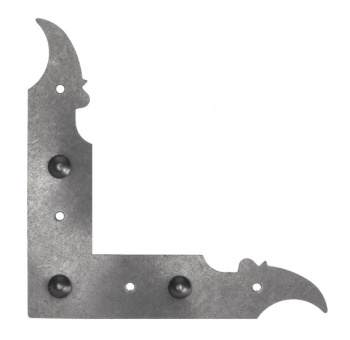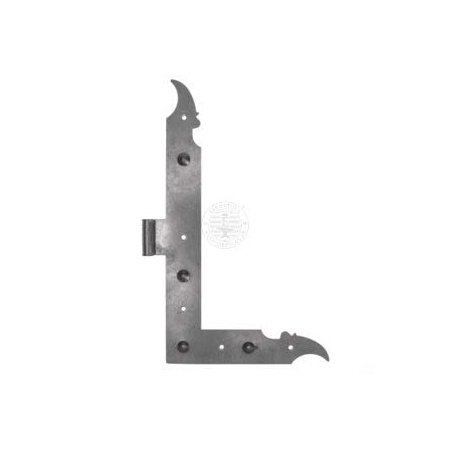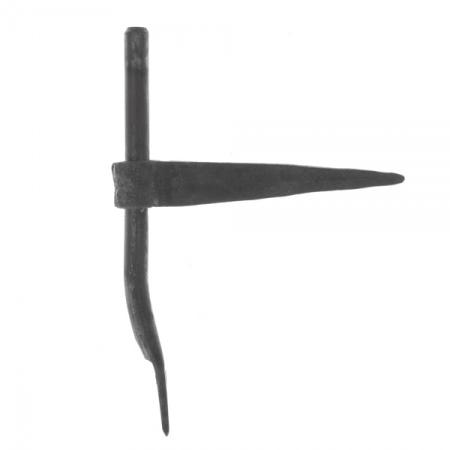5101
SKU: 5101
Price:
15,80 €
Kukepea kujuline nurgik, viimistlemata, viimistlus on võimalik eritellimusel - tsinkimine ja kuumtsinkimine.
Surface treatment
All fittings are delivered untreated, unless otherwise stated. Steel fittings that are mounted outdoors must be carefully painted against rust protection before installation. In connection with painting the carpentry, the fittings are also painted in the same color.
Until the 1950s, most steel fittings were delivered untreated. Some seizures began to be cadmized in the 1930s. This surface treatment method was replaced in the 1950s by galvanizing.
We offer the following surface treatments: (For each product, it is clear which surface treatments are available.)
Steel fittings: Without surface treatment, galvanizing, hot dip galvanizing, nickel plating, phosphating, tinning, pre-sealing.
Brass fittings: Without surface treatment, nickel plating
Without surface treatment
Untreated steel fittings rust immediately in a humid environment, unless they are protected against rust.
Untreated brass fittings age naturally due to moisture and oxygen in the air and take on a darker color over time. Brass contains copper and ergs, if exposed to excessive moisture. Brass fittings are not protective lacquered.
Galvanizing
Performed electrolytically. The zinc forms a layer of about 12 μm. 1 μm = 1/1000 mm. The surface layer of the zinc is chemically converted into a passivation layer, which protects the zinc from corrosion. If a scratch occurs in the zinc layer, the surrounding zinc "migrates" to the damaged site and protects it ("self-healing"). The galvanization is slightly blue and is relatively shiny. Zinc is a fairly soft metal. Electric galvanizing replaced cadmiuming in the 1950s, as rust protection for
steel parts.
Hot dip galvanizing
Performed by dipping in molten zinc. Subsequent centrifugation removes excess zinc and produces a matte, gray surface with a zinc thickness of 45-75 μm. Because the zinc reacts with the steel, a good adhesion is obtained. Minor damage to the zinc layer "self-healing".
Nickel plating
Performed electrolytically on both steel and brass. Gives a high-gloss silver-colored surface (slightly in the yellow direction) when the substrate has been polished. On unprocessed surfaces, the nickel-plating becomes rough depending on the nature of the substrate but is still silver-colored. Layer thickness 10-15 μm. Nickel plating is a decorative surface treatment and has no anti-corrosion properties. The nickel layer always has microcracks that eventually let the moisture into the base metal, such as rust (steel) or brass (brass). Is not "self-healing". The nickel layer itself is very hard, which is why scratches do not occur so easily. Nickel plating came into use in the 1890s and quickly became popular, as it does not (like brass) need to be polished to keep it shiny. However, the nickel will eventually slow down.
Phosphating
Zinc phosphating is performed chemically on steel. The surface becomes matte thunder gray, but can vary in color. Some rust protection is obtained, but worse than with galvanizing. Provides a very good mount for subsequent painting.
Tinning
An electrolytic tinning of steel. Has excellent anti-corrosion properties. Layer thickness 10-15 μm. In the 18th century, various hand-forged fittings were tinned for outdoor use. It was the best rust protection of the time. Gives a semi-matt silver-colored surface. Is not "self-healing".
Mass
Electrolytic pre-machining is performed on steel parts that have first been nickel-plated, to make the steel look like brass. The brass layer is about 1μm thick. Used primarily for details, which would be too soft if they were made of brass, such as hinges and accessories for espagnolettes. We do not protect painted brass details and they therefore darken over time in the same way as brass. Pre-molding has no anti-corrosion properties, but is only of a decorative nature.





